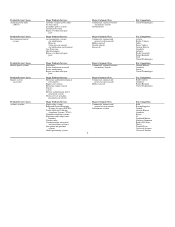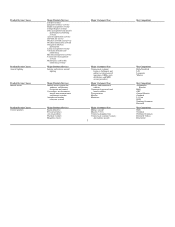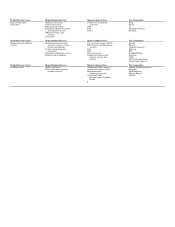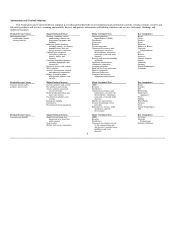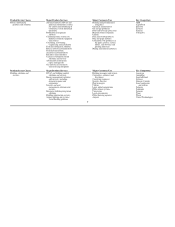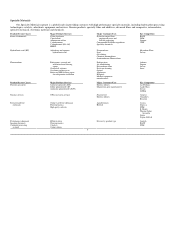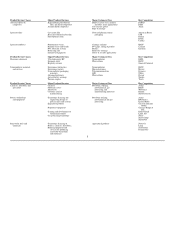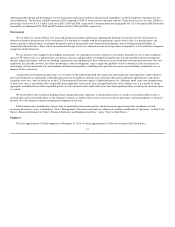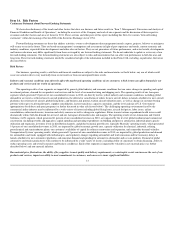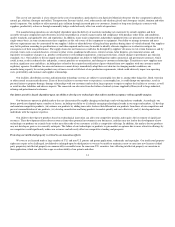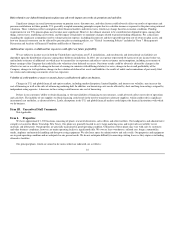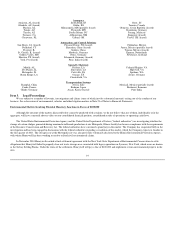Honeywell 2010 Annual Report Download - page 15
Download and view the complete annual report
Please find page 15 of the 2010 Honeywell annual report below. You can navigate through the pages in the report by either clicking on the pages listed below, or by using the keyword search tool below to find specific information within the annual report.
additional product design and development costs in Automation and Control Solutions and increased expenditures on the development of products for new
aircraft platforms. The decrease in R&D expense in 2009 compared to 2008 of 14 percent was consistent with our 15 percent decrease in net sales. R&D as a
percentage of sales was 4.4, 4.3 and 4.2 percent in 2010, 2009 and 2008, respectively. Customer-sponsored (principally the U.S. Government) R&D activities
amounted to an additional $874, $852 and $903 million in 2010, 2009 and 2008, respectively.
Environment
We are subject to various federal, state, local and foreign government requirements regulating the discharge of materials into the environment or
otherwise relating to the protection of the environment. It is our policy to comply with these requirements, and we believe that, as a general matter, our
policies, practices and procedures are properly designed to prevent unreasonable risk of environmental damage, and of resulting financial liability, in
connection with our business. Some risk of environmental damage is, however, inherent in some of our operations and products, as it is with other companies
engaged in similar businesses.
We are and have been engaged in the handling, manufacture, use and disposal of many substances classified as hazardous by one or more regulatory
agencies. We believe that, as a general matter, our policies, practices and procedures are properly designed to prevent unreasonable risk of environmental
damage and personal injury, and that our handling, manufacture, use and disposal of these substances are in accord with environmental and safety laws and
regulations. It is possible, however, that future knowledge or other developments, such as improved capability to detect substances in the environment or
increasingly strict environmental laws and standards and enforcement policies, could bring into question our current or past handling, manufacture, use or
disposal of these substances.
Among other environmental requirements, we are subject to the federal superfund and similar state and foreign laws and regulations, under which we
have been designated as a potentially responsible party that may be liable for cleanup costs associated with current and former operating sites and various
hazardous waste sites, some of which are on the U.S. Environmental Protection Agency's Superfund priority list. Although, under some court interpretations
of these laws, there is a possibility that a responsible party might have to bear more than its proportional share of the cleanup costs if it is unable to obtain
appropriate contribution from other responsible parties, we have not had to bear significantly more than our proportional share in multi-party situations taken
as a whole.
We do not believe that existing or pending climate change legislation, regulation, or international treaties or accords are reasonably likely to have a
material effect in the foreseeable future on the Company's business or markets that it serves, nor on its results of operations, capital expenditures or financial
position. We will continue to monitor emerging developments in this area.
Further information, including the current status of significant environmental matters and the financial impact incurred for remediation of such
environmental matters, if any, is included in "Item 7. Management's Discussion and Analysis of Financial Condition and Results of Operations," in Note 21 of
Notes to Financial Statements in "Item 8. Financial Statements and Supplementary Data," and in "Item 1A. Risk Factors."
Employees
We have approximately 130,000 employees at December 31, 2010, of which approximately 53,000 were located in the United States.
12


